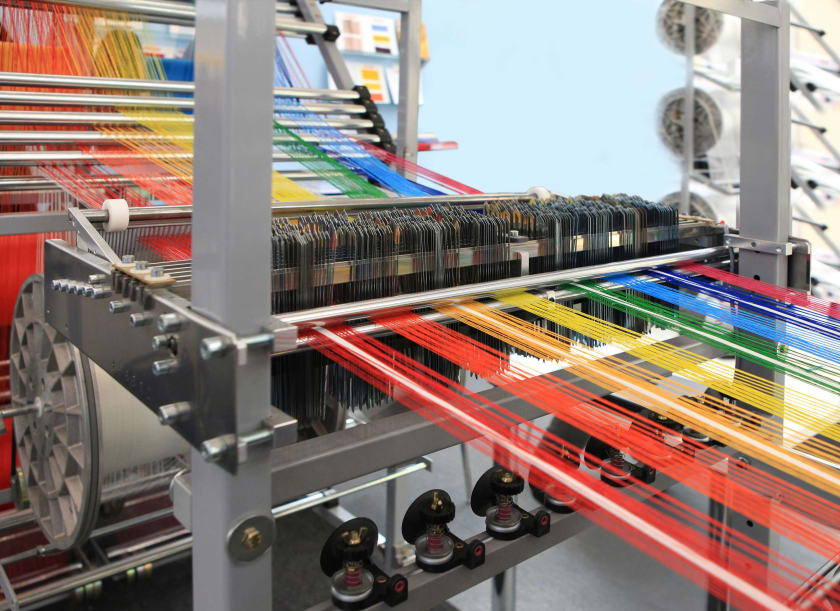A stitch in time saves nine: How do textile brands weave success during recession?



Summary: The International Monetary Fund has sounded the alarm for businesses globally by slashing growth projections amid sharp inflation and ever-rising interest rates. Textile brands looking to outperform must do a balancing act of streamlining manufacturing and delivery and thoughtful investment to reap dividends.
The International Monetary Fund (IMF) recently slashed global growth projections for 2023 amid the continuing Ukraine-Russia tensions, a thickening energy crisis and consistent inflation. Coupled with the compounding after-effects of the Covid-19 pandemic on the economy, the future seems uncertain for many companies looking forward to a bounce-back in the coming year.
In times like this, businesses have to brace themselves with a keen knowledge of global occurrences. Brands have to anticipate in advance the fender-benders of supply and demand statistics, besides its possible economic ramifications, to ride out the tidal wave of an incoming global recession.
The pieces of the puzzle are yet to fall in place while brands work and rework numbers to gauge their stability during what might be the world's weakest growth profile since 2001, barring during the pandemic. The global forecast shows a decline in growth projections from 6 percent in 2021 to 3.2 percent in 2022 and eventually to 2.7 percent in 2023.
So circling to the pertinent questions in everyone's minds, how will textile brands in the United States fare during the upcoming recession?
Money in short supply equals tighter pockets
World economic news reportage suggests that brands are increasingly becoming wary of capital expenditure.
Over the years the textile market has been a fine balance of short-term repercussions and long-term structural integrity influenced by varying factors.
While textile stock prices have shot up in the past few years, a sharp rise in cotton prices during the cotton season 2021-22 (October 2021 to September 2022) has hurt production, manufacturing, utilization of stock, and import and export.
Naturally, both B2B and B2C entities will think twice about investing or indulging in textile transactions for a while, in case they seek short-term returns.
Aggressive interest rate hikes to battle raging inflation have warded off potential short-term investors.
The Asian Connection
To understand how big economies and recessions function, it is important to understand that it's all interconnected.
A global war, depleting trust in monetary reserves, value of services and commodities, and fire-hot prices are all cumulatively responsible. The growth trajectory of economies looking to bounce back post-Covid, suddenly saw themselves battling with wars, towering basis-point rate hikes and unrestrained crude oil price hikes.
The USA is one of the key markets for Asian textile and apparel exports from countries like India, Pakistan, Bangladesh, Sri Lanka and China. The United States is a major textile market for India, accounting for 50 percent of home textile exports and 28 percent of apparel exports, as per ICICI Securities, as mentioned in a Moneycontrol report.
World economic news suggests that decreased demand from the USA over a global spike in cotton prices due to supply shortages and disturbance in the container supply chain may entail inventory holding. Inventory holding could, in turn, lower order flows to sourcing partners globally.
Textile sourcing partners and brands should aim to maintain their margins by keeping a close watch on raw materials, higher logistics and unit costs.

Proper planning and technology to the rescue
Economic news predict a plummet for big businesses globally. This is especially the case for the US in 2023. Given this scenario, it is prudent to stay ahead of the curve to establish dominance and stability.
The early bird catches the worm is a proverb that best describes the course of action for brands looking to weather the recession tsunami.
AI-powered platforms like Fashinza may serve as a saving grace in a scenario like this. The platform can help connect clothing manufacturing brands with suitable, cost-effective, capable and highly-vetted supplier options. This would serve the two-pronged purpose of choosing the best and choosing the viable amid economic turmoil.
A B2B approach to fashion technology would also help brands bolster their financials in the long term as the fashion industry is slotted for robust growth in the years to come.
Opting for a service to track costs, production status, delivery updates and payments - an end-to-end solution from design to delivery - holds a higher chance of keeping brands afloat. This saves time, manpower and energy, and helps with overall cost optimization.
Time for action
The time is nigh for taking a call on how to restructure businesses in tune to facing the recession head-on. Proper research, openness to technology and trusting numbers will go a long way in weathering the storm and bouncing back stronger.
Key Takeaways:
i) Recession is coming but smart thinking and timely action would be key to keeping brands afloat
ii) The textile industry is dependent on global ups and downs, so self-dependence via the technological route can result in cost-optimization and streamlining production and delivery
iii) A keen understanding of market fluctuations and competitor brand performance can help a business chart its course of action better. Competitor analysis would be a smart way to go about it.



















